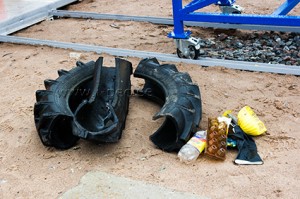The term ‘pyrolysis’ refers to a heat treatment process for converting a hydrocarbon waste into fuel or chemical products. Pyrolytic process creates a value from refused materials, which are otherwise be landfilled.
For the first time, the practice of pyrolysis was introduced in the late XIX century to display the lighting gas from the of the kerosene fraction. Already in 1877, a patent was registered as pyrolysis technology.
Today, the process has been studied, modified and developed. Modern pyrolysis systems shown and explored on the world market of waste management are unique in terms of the type of plant’s inputs and outputs. These technologies are experiencing high rates of temperature and oxygenless environment:
- low temperature process — 450-550 °C
- middle temperature process — 550-800 °C
- high temperature process —900-1050 °C
The whole process is carried out at atmospheric pressure.
Techniques that fall into the category of pyrolysis may be divided into:
— semi-dried and oxidative, depending on type of reaction;
— oil, tyre, or plastic waste processing technologies, depending on feedstock composition;
— periodic (cycling) or continuous-flow systems, depending on raw materials input method.
Watch the video on TDP plant pyrolysis process description:
Systems Ins
— Industrial rubber goods, tyres
— Waste plastic, polypropylene bag (big bag), film
— Blend of polymers (PE, PP, PS)
— Lubricating and heavy oils, any type of solvents
— Oil sludge, drilling waste
Systems Outs
— Pyrolysis oil
— Biochar
— Syngas
— Heat
— Distilled water
Pyrolysis oil can be used as an alternative fuel source for renewable industry or can be refined. Biochar can be used for road construction, as a reinforcing agent or colorant. Gas provides a self-sustaining operation of the plant, or may be used for electricity generation. Heat of the plant is recovered and used for local heating. Distilled water (in case of brine based drilling fluid processing) is used as drilling solution preparation or drinking water.
When using the material or any part of it the link to the website (www.i-pec.ee) is required






